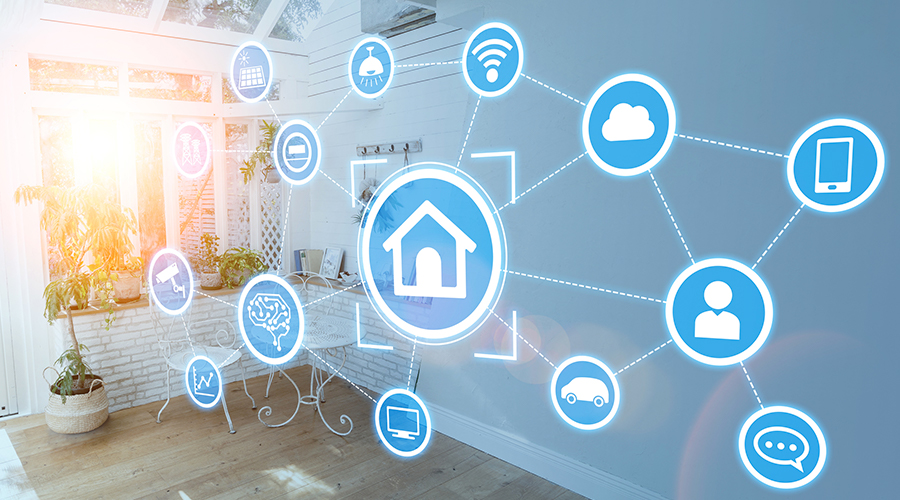What is Home Automation?
Home Automation, or domotics, derives from the word domus, which means “home” and its suffix “tic” which refers to the word “technique”. Thus, home automation is made up of techniques combined with new technologies in order to automate the home. It aims to improve and facilitate daily life by providing comfort, safety and energy savings.
How Does Home Automation Work?
Home automation is based on a networking of all electrical appliances in the house. This equipment is controlled by a central computer that communicates via transmitters, receivers, sensors and detectors. Devices such as the boiler, appliances, shutters or doorways are connected to the central computer by the home automation box, a smartphone or a tablet. As a result, the house can be fully controlled remotely.
What Is Home Automation Used For?
Home automation aims to simplify the lives of the residents of the home by bringing comfort, security, communication and saving time and money. It also help those who have a loss of autonomy, along with disabled or elderly people. Therefore, there are many reasons to consider home automation:
- Comfort: Home automation allows you to program the lighting of the house remotely by remote control, voice control or by presence detection. It also offers the ability to remotely control any device, open or close blinds and doors and manage heating in order to obtain the appropriate temperature.
- Security is one of the most essential components of home automation. It offers anti-theft devices: alarms, remote monitoring, motion sensors. It also prevents water leakage or exhaust fumes. Home automation controls the house by using a digicode or biometric system.
- Home automation communication allows you to control the entire house by using screens placed in your home or elsewhere. These connected devices linked to the family network offer automation systems such as lighting, closing or opening doors… many possibilities are available.
- Energy savings in home automation account for about 20% of consumption. Remote control allows for adequate management of the lighting or heating of the house, so you can stop the heating, or automatically turn off all the lights. It is also a considerable time saver.
In any case, it is important to call on the help of a professional for the optimization your future installation.
Rethinking future homes means using home automation for everyday comfort and safety.


